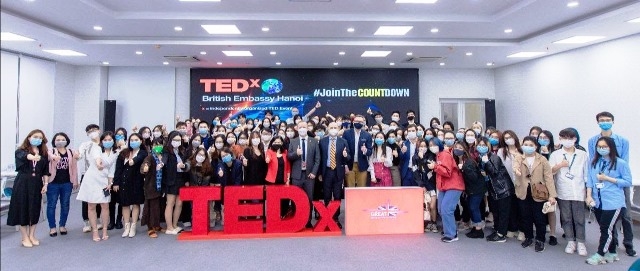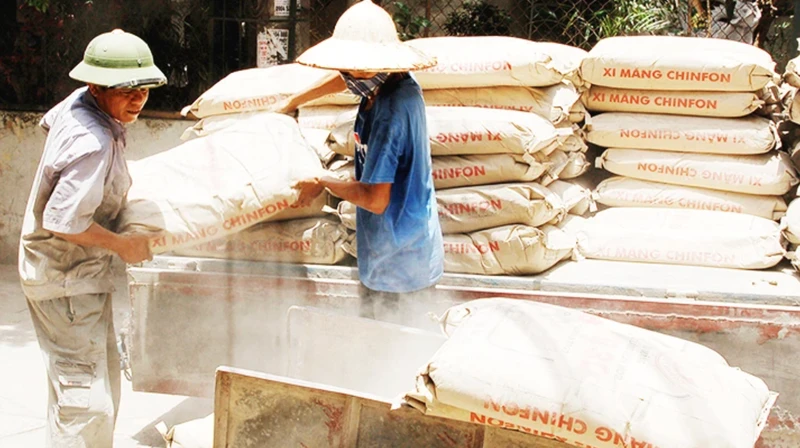Production week: a “green revolution” in agriculture
- Home
- Agricultural circulation
- Production week: a “green revolution” in agriculture
Share
RELATED POSTS
In the context of price agricultural supplies, livestock feed rising agricultural production, circulation is a reasonable solution to reduce input costs, improve economic efficiency for producers; at the same time, help reduce environmental pollution, reduce greenhouse gas emissions, protecting the ecological and human health...

At present, our country has appeared thousands of models, livestock, cultivation and fisheries in the direction of agricultural circulation. In these models, the production process according to the closed cycle is set through the application of advanced science and engineering, bio-technology, technology, physical chemistry.
IMPRESSED WITH THE MANY MODELS OF AGRICULTURAL CIRCULATION
In Ninh Thuan province, models produced at the farm of jsc food G. C (GC Food) has yielded practical results in the application of model agricultural circulation. Farm Sun & Wind (Sun and Wind) of the GC Food began operations from 2018, with an area of almost 100 hectares, at Phu village, Thuan commune, Mỹ Sơn, Ninh Son district, Ninh Thuan province.
The main agricultural products of the farm Sun & Wind include: grapes, apples, melon, aloe vera, cow breeding mountain, mountain chickens, sheep... all shells, kelp, aloe vera from plant processing aloe vera of GC Food is collected, fermented microorganisms, mixed with cattle manure to produce organic fertilizer for the aloe vera raw materials, vineyards, apple orchards, and pasture to feed the cows and sheep.
Mr. Le Minh Vuong, in charge of agricultural economics circulation at the farm Sun & Wind, said each year the farm to re-use handle over 1,000 m3 shell vera leaf waste from the factory, making use of cow manure available at farm combined shell vera leaf to production processing, composting, cow aloe vera brewed hoai provide circulatory backwards for items cultivation.
Company T&T 159 in Hoa Binh province has built models livestock circulation, with the scale of 25ha. Average per month, farm provide the market with about 800 buffalo, cow commercial. Every day farm produces about 100 tons of organic fertilizer, worth 300 – 500 million. The company T&T 159 is associated with nearly 6,000 households in Hoa Binh province and the neighboring provinces to ensure the supply of waste agricultural products, technology transfer, breeding cattle at farmers.
Model agricultural circulatory Mushroom – Beef – Duck – Rice – Power on land, alum in Hau Giang company LIMITED HG FARM (HGF) is a typical example in optimizing the material flow, bringing benefits in terms of environment, adapt to climate change and economic benefits. Chain breeding cows of HG FARM't just create products beef to trade, but also create the products: cow manure, fresh, earthworm, stool cushion. In HG Farm, cow manure to feed the earthworm and then use earthworm to poultry as well as the earthworms will fertilize the crops.
Model rice-duck in here also optimized material flow in the chain agricultural thuan thien: rice fields are the natural enemy is duck protection, as well as a fresh water source is rain water is maximum advantage. Ducks were fed fermented from cow manure fresh with cost only a third of the food industry and manure the same duck price can sealing will fertilize rice fields thuan thien. After harvesting the rice, then straw and bran will come back as food for cattle breeding, as well as the abalone mushrooms. Similarly, cows will consume the biomass when growing vegetables-radishes-tropical fruit.
Plant rice milling Vinh Binh An giang province with capacity of 80,000 tons of rice per year, creating 16,000 tons rice husk. Is factory re-use 50% of the husk into the drying rice, the rest are production of bars, rice husk firewood sold in the market for the processing facility to burn the boiler. This model has helped reduce 30% energy cost at home dryer and milled rice, at the same time increase profits 400,000/tons of rice from the sale of firewood, equal to 3.2 billion/year; the amount of reduction in greenhouse gas emissions reach of 10.2 tonnes CO2-e/ha/year.
THE SOURCE EXTRACTION SCRAP, AGRICULTURAL PRODUCTS
According to statistics, the agricultural sector has its scrap, by-products extremely large with about 156,8 million tons of the total production of by-products; includes: 88,9 million tons of by-products after harvest from plants and soil cultivation; 61,4 million tons of livestock and poultry from animal husbandry; 5.5 million tons from the forestry sector and about 1 million tonnes from aquaculture.
“Private for the sector rice, the volume of by-products is estimated 47 million tons of straw, 8.6 million tons of ash, rice husk, 5.6 million tons of bran. With fruit, the volume of by-products is estimated at 4.4 million tons. For shrimp, the volume of by-products is estimated at 315 thousand tons...”
According to the Ministry of Agriculture and rural development.
This is the source of scrap, by-products is very large, can production, processing and the many valuable products. However, the use of non-rational source products, this is wasteful and increases greenhouse gas emissions, environmental pollution (land, air, and water). Own products cultivation, according to the calculations of experts of agriculture and environment, can waste up to a few hundred thousand billion/year.
Nguyen Van Hung, Chief mechanization and post-harvest (rice Research Institute international), said on average each year, Vietnam has about 47 million tons of straw, then there are about 20 million tons is people burning right on the field, causing loss nutrition for the land; creating emissions and environmental pollution...
In the fisheries sector, nearly 1 million tons of by-products has not yet been processed, the processing efficiency. Mr. Tong Xuan Chinh, Deputy head of the Department of animal husbandry, for, or there are many solutions handling and processing products, glass products, including: extraction of biological compounds for the cosmetic industry, pharmaceutical products such as extraction of chitin, chitosan from shrimp shells, collagen and gelatin from fish skin test; feed for livestock; make organic fertilizer... However, today, the industry fishery products in our country reached about 275 million USD in 2020, in the meantime, if extraction of by-products by high technology, it can fall about 4 billion to 5 billion USD.
Economic development circulatory now is the general trend to develop green economy and sustainable. So, according to TS. Nguyen The Big by-product of agriculture, forestry and fisheries should be considered a renewable resource rather than waste. This is important input, lasting value-added chain in agriculture.
With the value to bring agricultural production and the environment, economic development, circulation in agriculture should be promoted more to continue to increase in the value chain for the agricultural sector, aiming to develop green economy and sustainable.
Full content of the article to be published in the Journal Economics of Vietnam 7+8-2024 release date 12-25/02/2024. We invite You readers to read at this:
https://postenp.phaha.vn/chi-tiet-toa-soan/tap-chi-kinh-te-viet-nam
Source: bloomberg.vn









